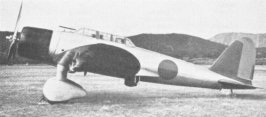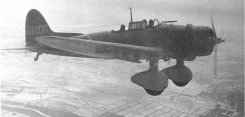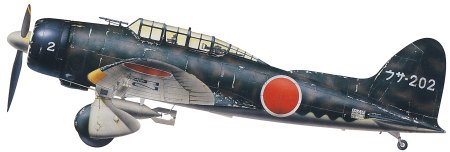
Aichi D3A Val
Having dropped the first Japanese bombs to fall on American targets during World War II, the D3A went on to sink more Allied warships than any other Axis aircraft. It was given the Allied codename 'Val' and its early success gave no hint of its troubled design history or the terrible losses that were to be suffered later in the war. During the initial stages of hostilities against America, the D3A was feared as a formidable dive-bomber.
Having identified a requirement for a new carrier-capable dive-bomber to replace its Aichi D1A2 biplanes, the Imperial Japanese Navy (IJN) issued a specification to Japanese industry during 1936.
Aichi answered with a monoplane design featuring a fixed, spatted undercarriage and a wing inspired by that of the He 70. Research had shown that the extra weight and complexity of retractable landing gear was not justified by the corresponding small increase in overall performance.
Initial flight tests revealed a number of serious problems, but after a major redesign, which included an increase in power, the aircraft was chosen over the Nakajima D3N1. At this stage a dorsal fin was added to rectify persistent directional stability problems, before carrier qualification began in 1940.
Involved in a number of naval actions, including the attacks on Pearl Harbor and the sinking of the British carrier HMS Hermes, the D3A1 was replaced from June 1942 by the D3A2, which featured increased fuel capacity, a propeller spinner and modified canopy. As World War II progressed, the 'Val' began to suffer horrendous losses and all but the smallest carriers had their aircraft replaced by the Yokosuka D4Y Suisei. In the final year of war, many D3As were expended in suicide attacks.
 |
 |
 |
| Aichi produced two prototypes of the 11-Shi Navy Experimental Carrier Bomber, which was to become the D3A. This was the much-modified second aircraft. |
Known to the Japanese as the Navy Type 99 Carrier Bomber Model 11, the D3A1 was a highly accurate delivery platform, especially effective in diving attacks on ships. |
Belonging to the 33rd Kokutai, this D3A1 has its rear canopy removed, allowing the rear-seater a greater field or fire. This was a typical in service configuration. |
|
Aichi D3A Val (Technical Specification) |
| Role |
Two-seat, carrier-based dive-bomber |
| Manufacturer |
Aichi |
| Maximum Speed |
430 kmh (267 mph) |
| Maximum Range |
1,352 km (840 miles) |
| Ceiling |
10,500 meters (34,500 feet) |
Weight
Empty
Maximum Takeoff |
2,570 kg (5,654lbs)
3,800 kg (8,360 lbs) |
Dimensions
Wingspan
Length
Height
Wing Area |
14.37 meters (47 ft 2 in)
10.20 meters (33 ft 6 in)
3.85 meters (12 ft 8 in)
34.90 square meters (373 sq ft) |
| Engines |
One Mitsubishi Kinsei 54 14-cylinder air-cooled radial engine which provides 969-kW (1,300 hp) |
| Armament |
Two fixed forward-firing 7.7 mm (0.303 cal) Type 97 machine-guns
One flexibly mounted 7.7 mm Type 97 machine-gun in the rear cockpit
370 kgs (814 lbs) of bombs |
Photo Gallery
Click here to submit your photo
| Have A Passion For Aircraft? |
Subscribe to our 14 series FREE newsletter
delivered weekly on World War 2 Aircraft factfile... |
| NB:- We hate spam as much as you do, so your email address will NEVER be shared with or sold to anyone else. That's a Guarantee. |
|
|





